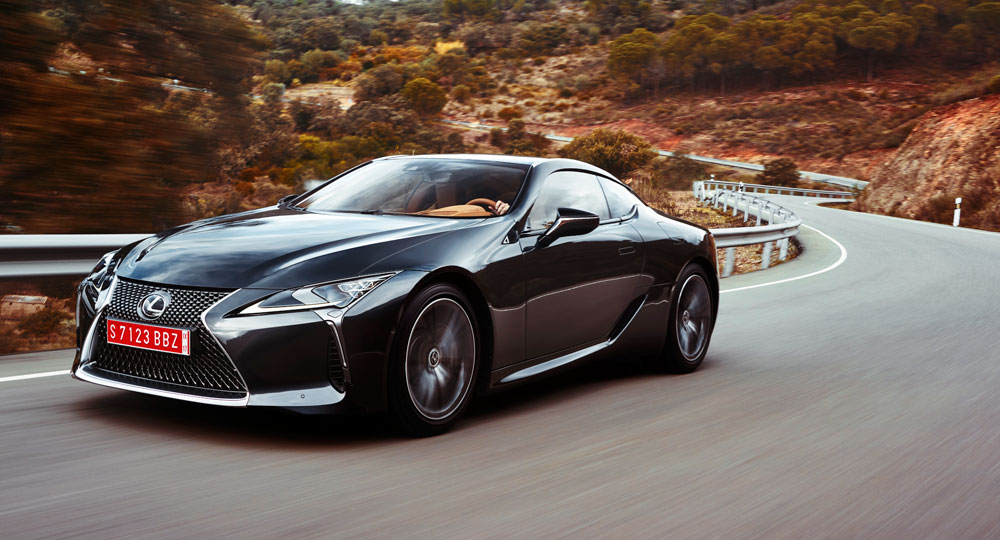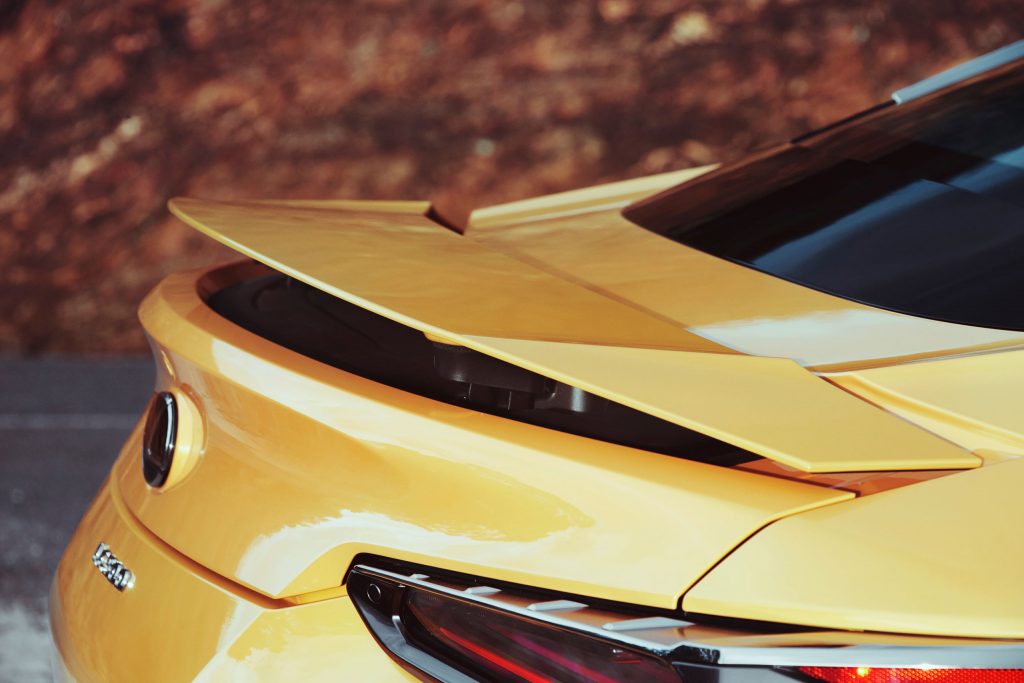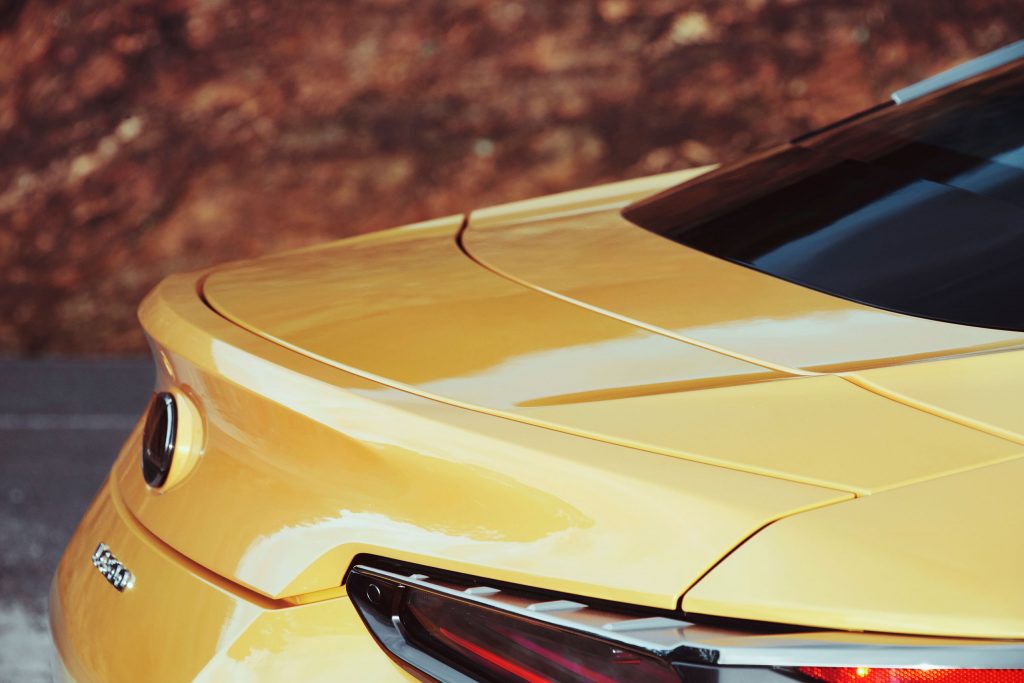Lexus Enthusiast editor Kevin Watts traveled to Seville, Spain, last week to test drive the all-new 2018 Lexus LC 500 & LC 500h hybrid. Here is a full technical overview of the new coupe, Kevin’s personal impressions will be posted on Monday.
It all started with a concept. The Lexus LF-LC coupe debuted at the 2012 North American International Autoshow in Detroit, and unlike most concepts, it was not scheduled to become a production car. Lexus built the coupe as a design exercise, an example of the future. There were no concessions to practicality, there was no thought of how the design would drive.
That all changed when the LF-LC met with near-universal acclaim, winning the prestigious EyesOn Design award and sparking the imagination of enthusiasts around the world. The stage was set for one of the Lexus’ most significant challenges — transform a pure concept into a viable production model.
Led by Chief Engineer Koji Sato & Chief Designer Tadao Mori, the Lexus engineering and design teams discarded the traditional departmental walls to form a unified team — an unprecedented move made necessary by an unusual situation.
Four years later, the Lexus LC 500 is unveiled at the 2016 North American Auto Show in a form near identical to the concept. The challenges were significant, with Chief Engineer Sato comparing the technical difficulty to the development of the original LS.
How was it done? How does it work? Was it worth it? Let’s dive deep into the all-new 2018 Lexus LC 500 & LC 500h.
Exterior Design
The LC started its life as the LF-LC concept, and it has retained much of the exterior styling. From straight on, the LC is dominated by a massive spindle grille:

The grille pattern is a gradient, with the tightly compressed mesh at the top transitioning to a wider diamond at the bottom. Note the top of the spindle grille does not have a chrome surround — this is a break from the traditional Lexus grille design.
The overall length of the LC is 4,750mm (187.4 inches), with a wheelbase of 2,870mm (113 inches). The front and rear overhangs are noticeably short — the front is just 920mm (36.22 inches), and the back is 970mm (38.19 inches):
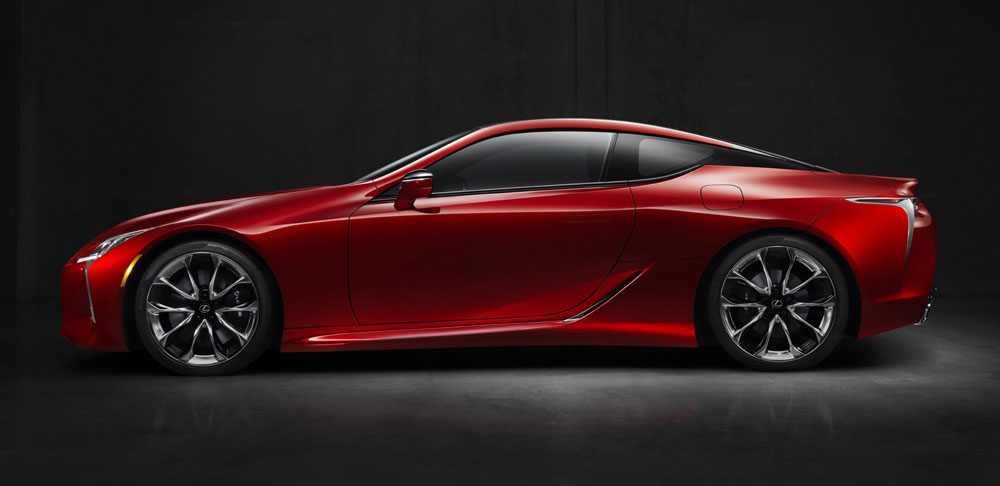
Central to the LC design is the spindle grille, and the hourglass shape can be seen in the way the front and rear fenders flare out and the door panels are pulled inward:

The lines from the front fender build up the A-pillar to form the boundaries of the blacked-out roof — Lexus cites “the traditional Japanese sword” as the inspiration for the sharp edges of the C-pillar molding:
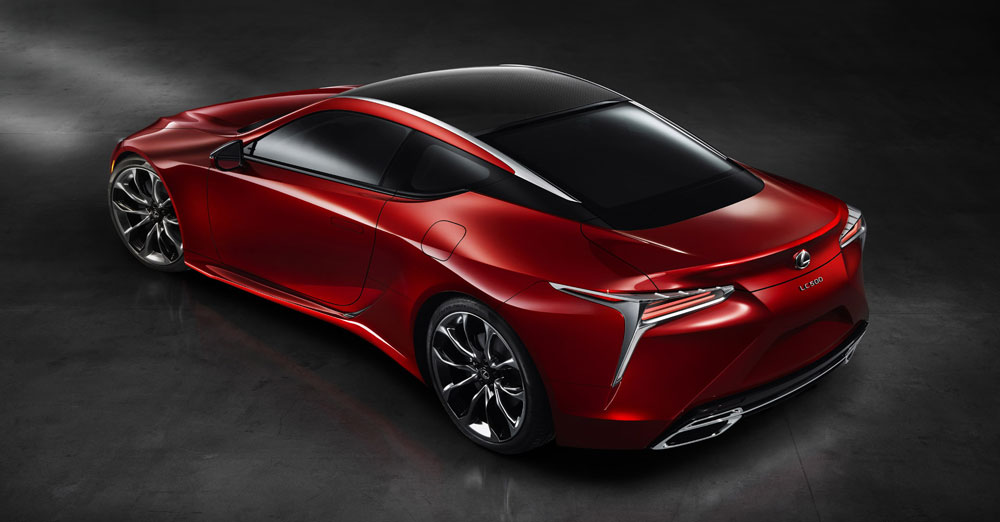
Once again, the spindle grille can be seen clearly in the central rear design — all other elements are recessed and pushed to the far corners:
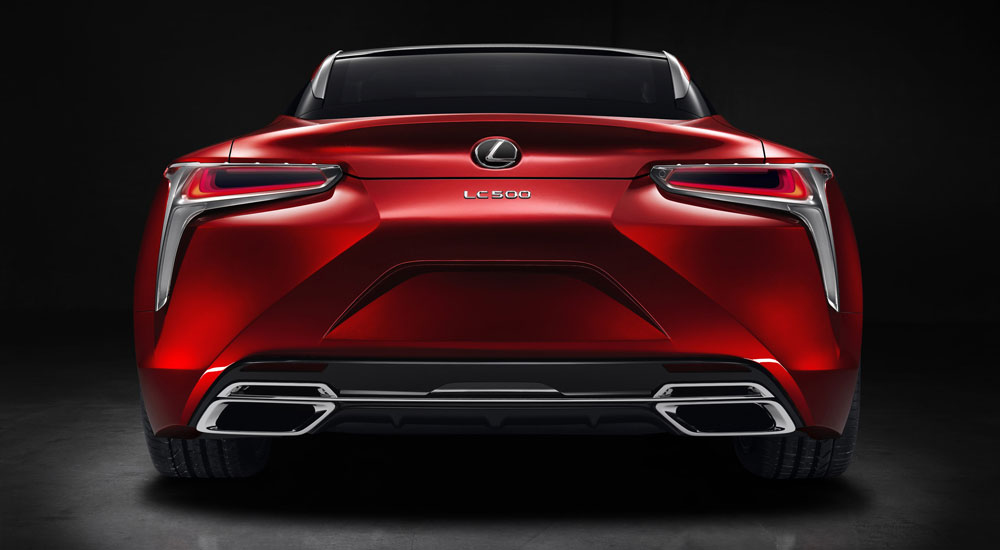
Lighting
In order to fit a headlight into the small overhang between the bumper and wheels, Lexus engineers had to develop an ultra-compact LED triple-projector:

The creatively-named Polaric Ellipsoid System lens is half the size of a conventional LED lamp, and can be placed directly in front of the wheel arch. Also integrated is the next-generation Lexus DRL design, which has been reworked to eliminate grain in the light signature.
The rear tail combination lamps should only be described as magic, but things are never so simple:
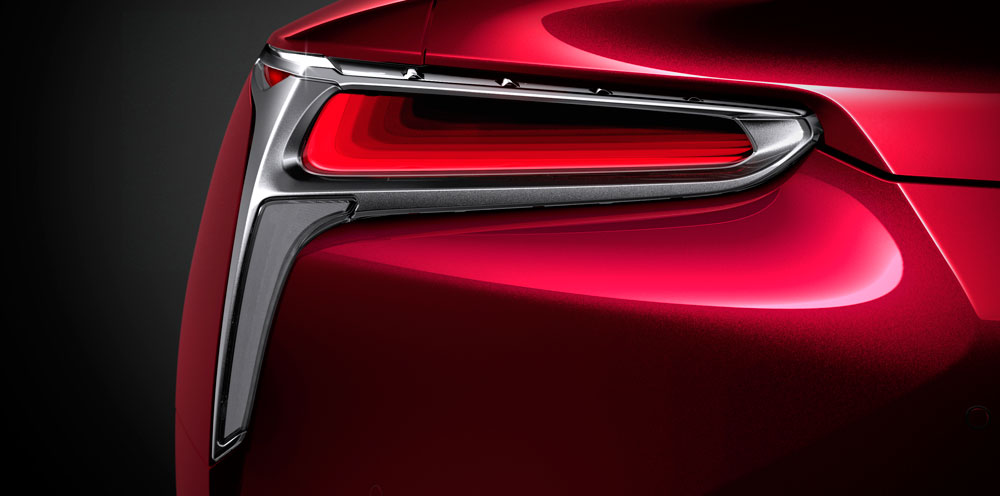
The infinite afterburner appearance is actually a strategically placed one-way mirror with the tail light reflecting back on itself — the full lamp assembly is only 77mm (3 inches) deep.
Interior
The LC interior is split into two distinct zones — the driver side is focused on easy access to all functionality, while the passenger side is shielded and much simpler:
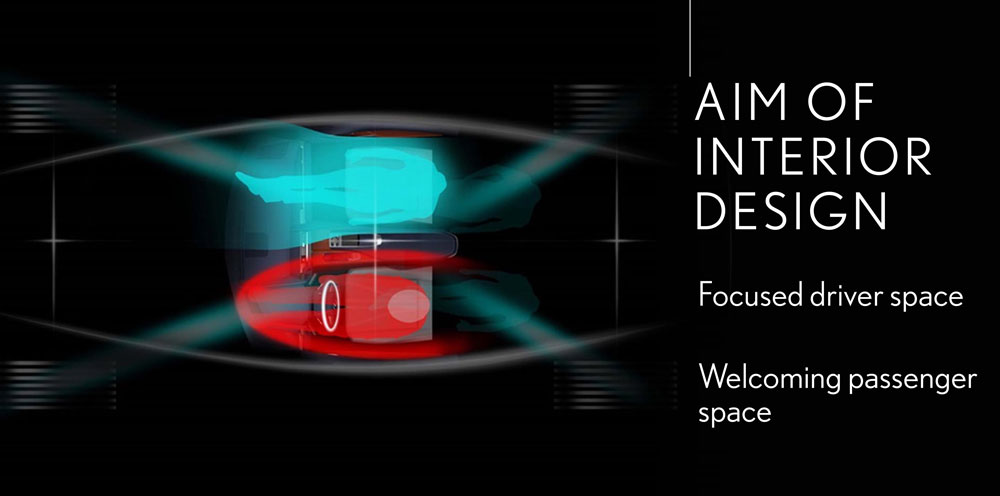

The center of the interior experience is the steering wheel, which has a varying circumference to accommodate for different driving styles. In order to allow for easier grip and improve the feel, the paddle shifters are made from magnesium alloy:
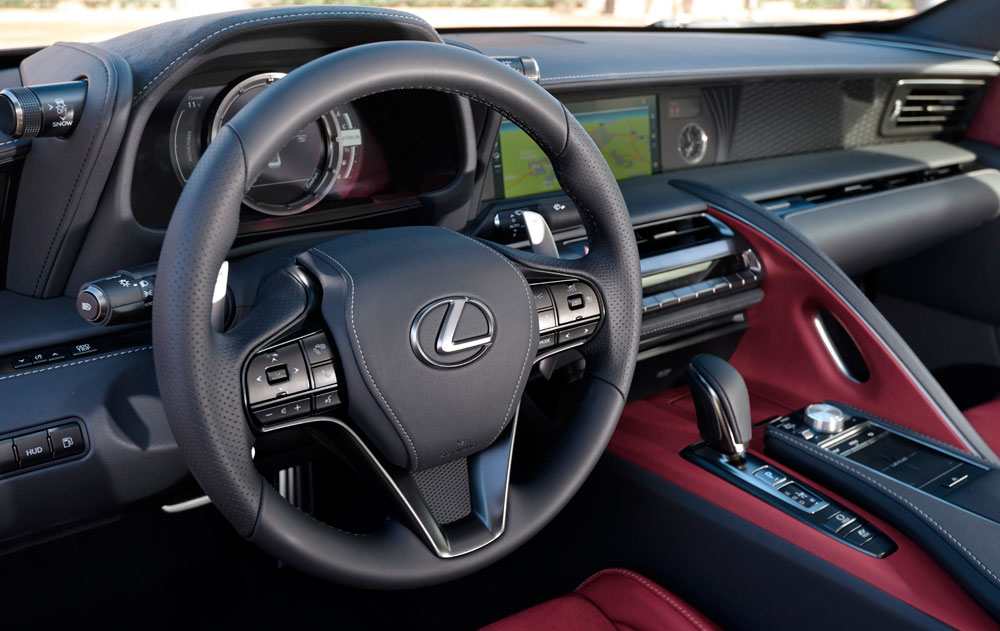
The 8-inch Thin Film Transistor LCD circular dial embedded in the instrument panel is a direct descendent of the LFA design — it moves side-to-side as the driver moves through the various menus and settings, and the appearance will change depending on the selected drive mode:

Also borrowed from the LFA is the Drive Mode Select control, which is placed to the side of the instrument panel:
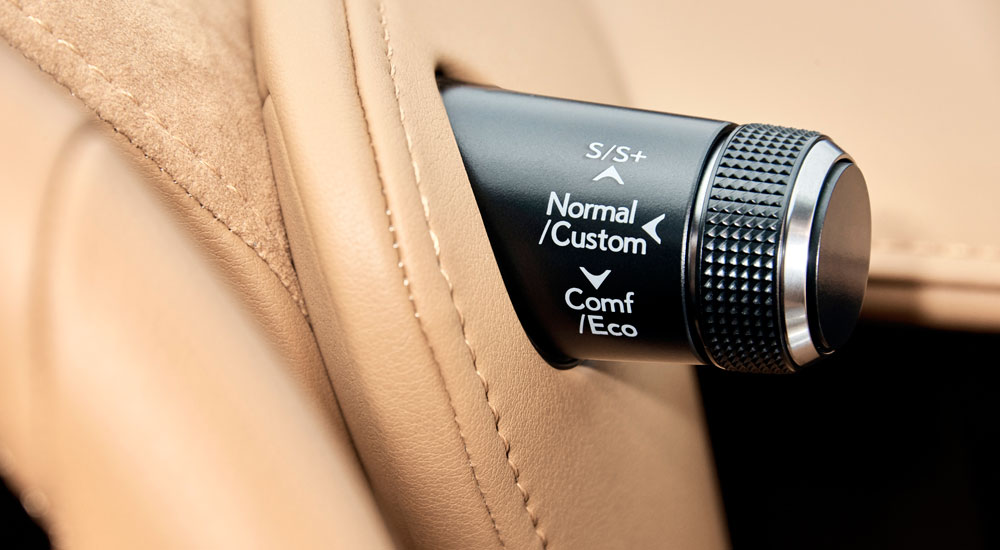
To get the front seats right, 50 different prototypes were developed over two years until the final design was chosen. The standard seat is a two-part design, with the seat-back inset a separate part that overlays the rest of the seat-body and wraps around the shoulder area:
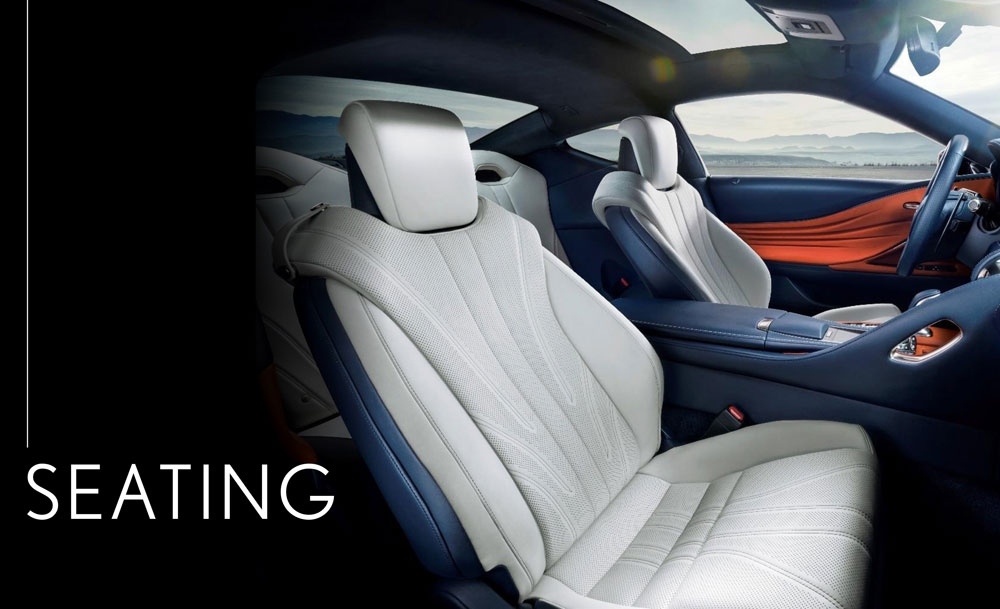
The seat in the LC Sport package is a different design that adds Alcantara trim for better grip and leather “blades” that lock in the driver’s back:
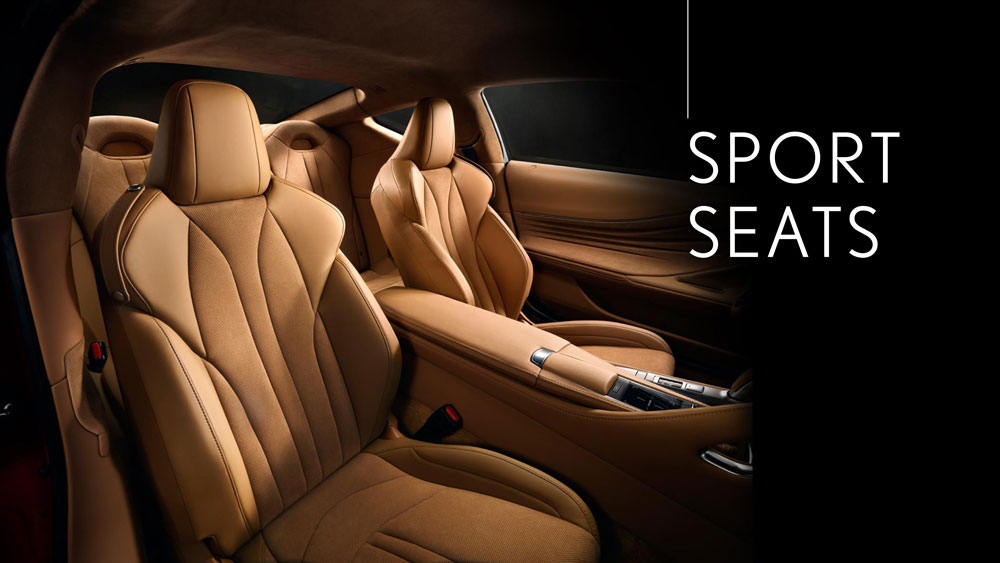
There are plenty of other highlights in the LC interior, including the hand-stitched shift knob — four strips of leather are stitched together from the inside-out, hiding all seams:
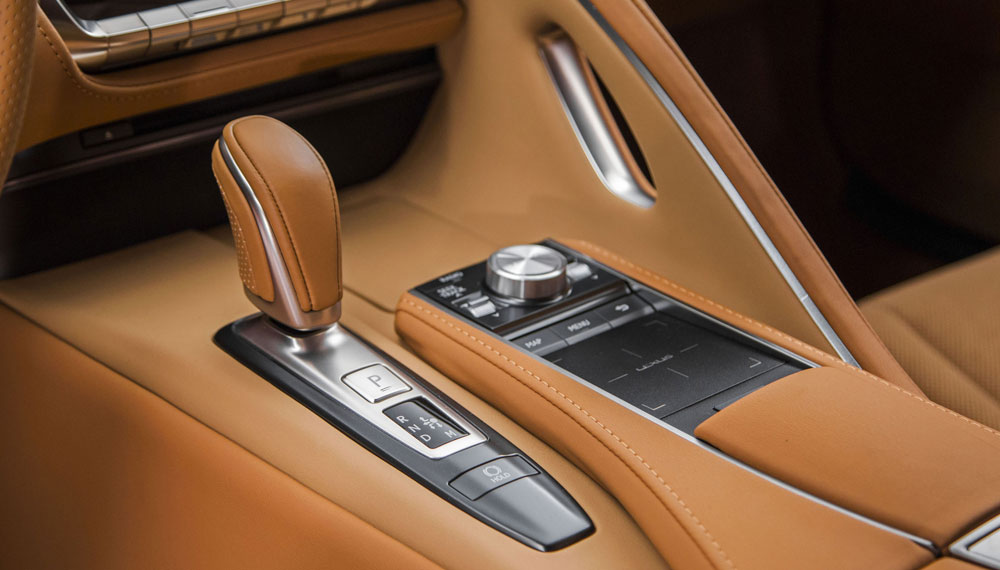
The interior door panel is also worth pointing out — to create the deep grooves in the door trim, Lexus started with a urethane elastomer foam, covered it in a double layer of raschel (a knitted fabric used in military backpacks) for ventilation and padding, then finished it with Alcantara:
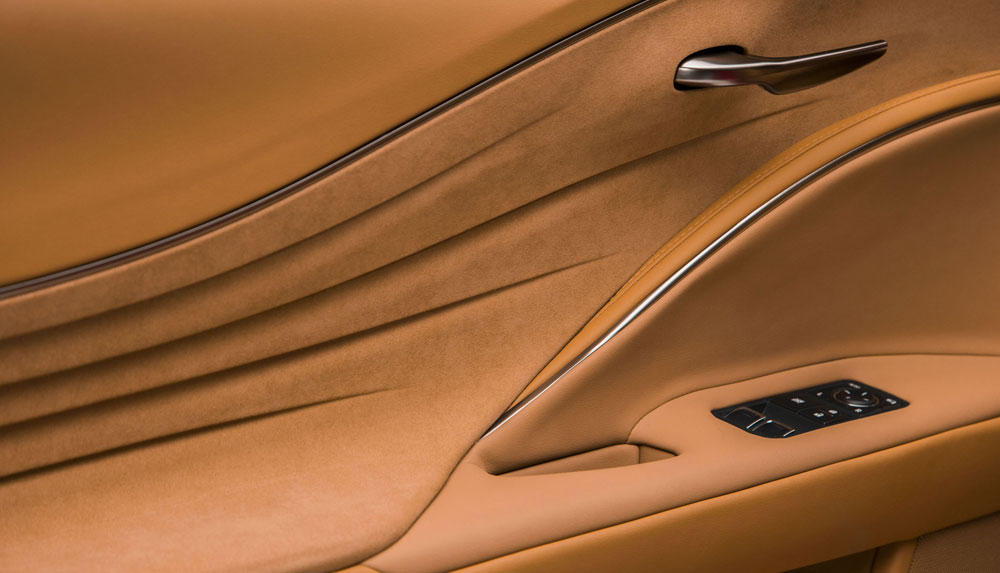
Newly Developed GA-L Platform
The LC is the first car to be developed on the new Lexus front-engine/rear-wheel drive platform, dubbed the Global Architecture – Luxury (GA-L) platform:

The GA-L platform will serve as the starting point for all future rear-wheel drive Lexus vehicles of the future, and it’s meant to provide lower overall mass, improved front/rear weight distribution (54/46 front/rear balance for the gas model, 52/48 for the hybrid), and a low center of gravity:
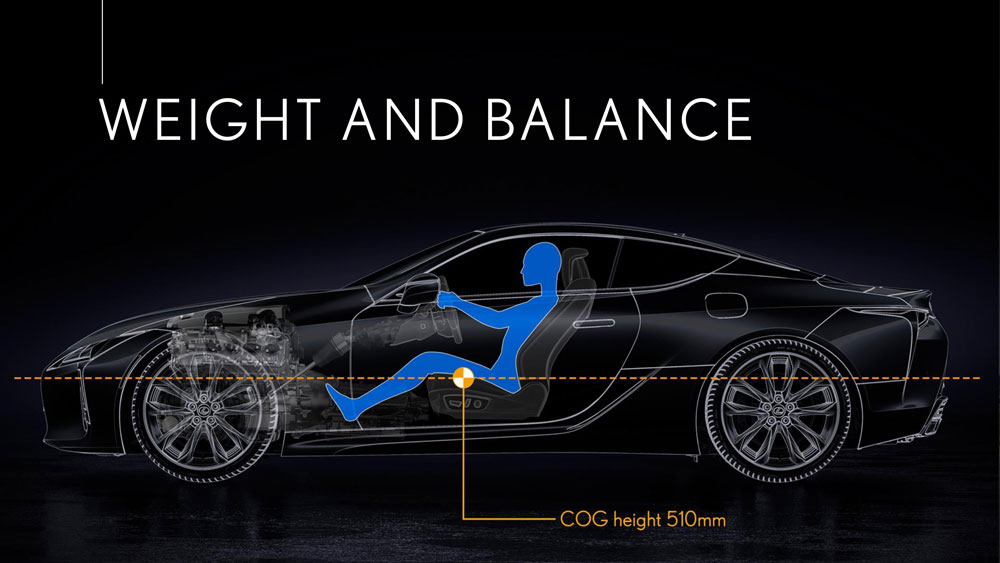
The platform design allowed engineers to push the wheels out further towards the corners of the vehicle, reducing the height of the hood while still accommodating the new multilink suspension. The engine position is also lowered 10mm and pushed 50mm closer to the center of the vehicle — this centers the weight of the engine and brings it closer to the drive, mitigating the load shifting from side to side:
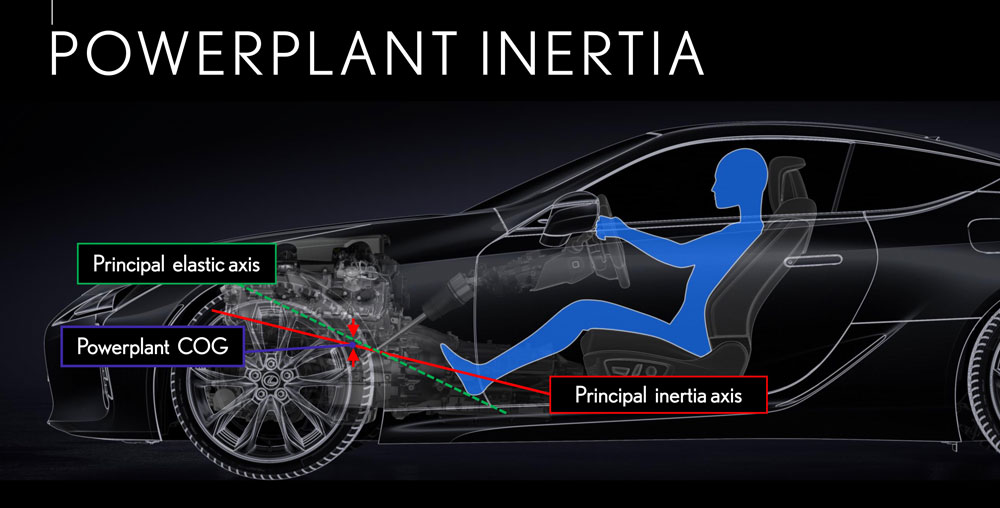
Run-flat tires are also used to avoid the need for a spare, and the vehicle battery has been relocated to the trunk to help with the overall balance.
Body Rigidity
There are significant reinforcements throughout the LC that provide rigidity and increase stability, starting with ample adhesive — there are 73 square meters (786 square feet) of glue throughout the upper and lower body, compared to just 21 square meters (226 square feet) used in the current IS sedan.

The frame is a mixture of ultra-high-tensile and high-tensile steel, while the hood and fenders are made from aluminum. The doors utilize Carbon Fiber Reinforced Sheet Molding Compound (CSMC) for the inner panel, while the outer shell is 6000 series aluminum — this makes the complete door 47% lighter compared to using steel:
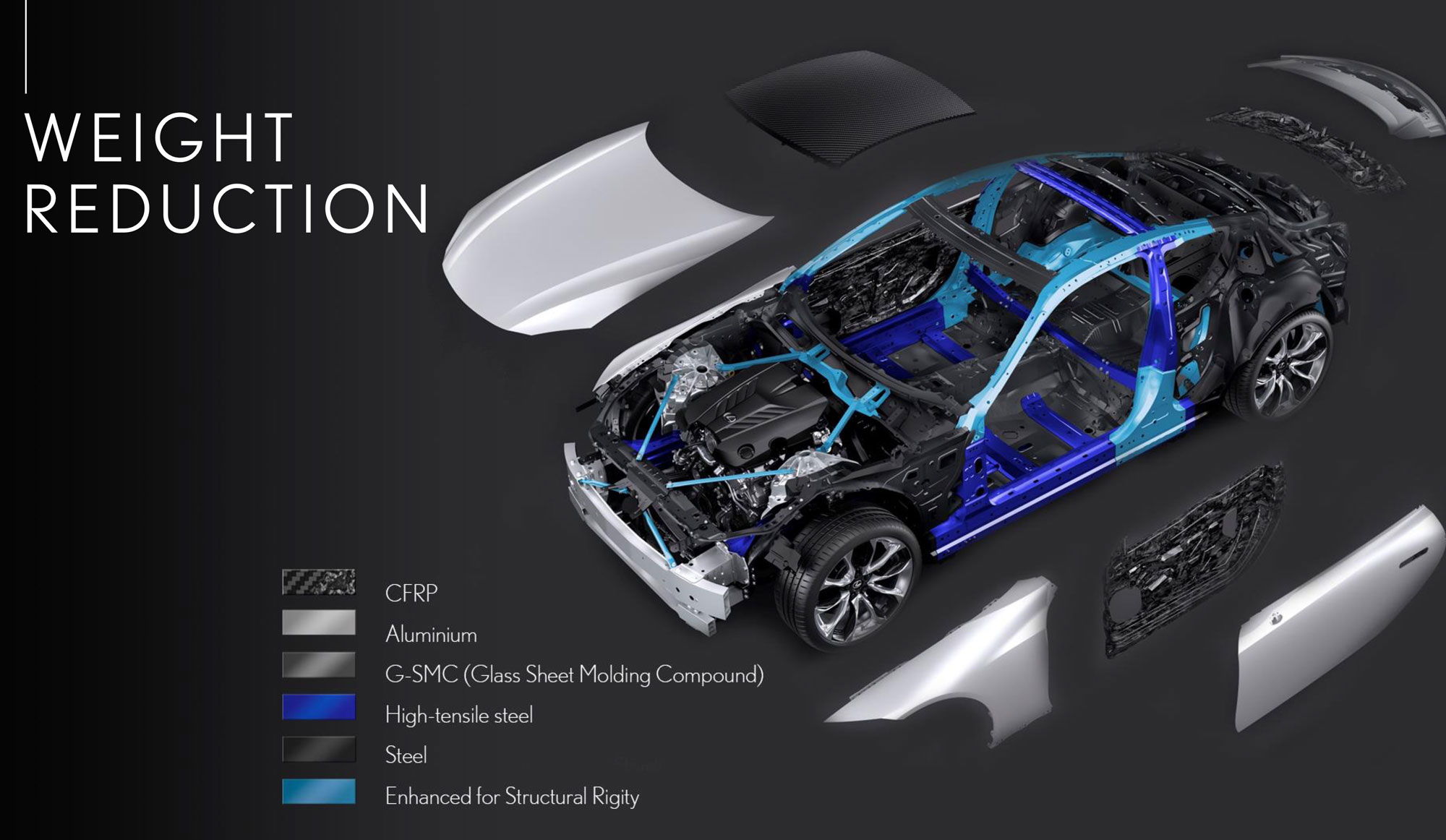
Die-cast aluminum front suspension towers have been used instead of steel, providing almost double the rigidity with 42% less weight. In a first for Lexus, self-piercing rivets have been employed to join aluminum and steel panels — used instead of spot welding, these rivets need only a single entrance point and help to maintain structural integrity.
To further enhance rigidity, six straight-bar braces have been used to lock the engine inside its compartment and prevent any minor motion:

Suspension
In order to maintain the appearance of the LF-LC concept, Lexus engineers had to develop a front suspension that would fit under the low hood. The result is a new double-joint multi-link suspension — the forged aluminum upper arm is secured at two points, which ensures all movements are mirrored from the lower arm:

The double-joint design reduces the necessary height of the suspension system, as placement is lower than a traditional single-joint setup.
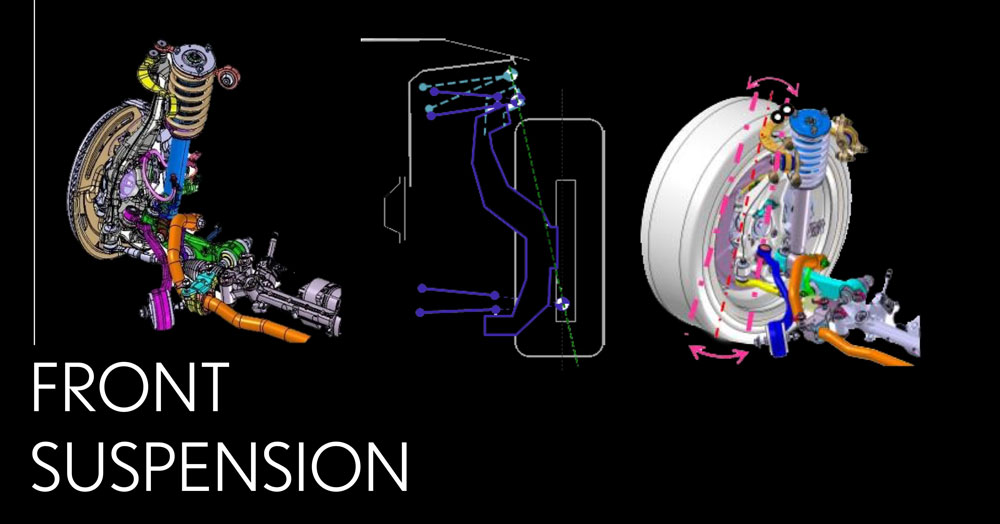
Aerodynamics
The challenge of transforming a concept into a production vehicle continued with the development of the LC aerodynamic signature. Small stabilizing fins behind the side mirrors are used to pull air close to the vehicle, and aero ducts in both the front bumper and side skirting feeds air across the sidewalls of all four tires for greater straight-line stability:
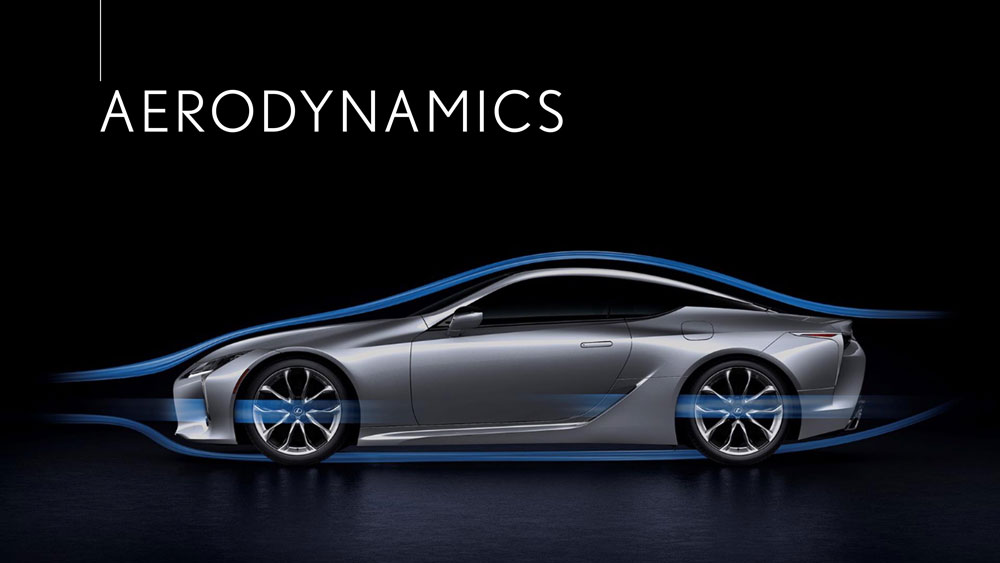
Underneath the LC, all components are covered by an extensive underbody plane — the covering raises up and meshes with the muffler design to form a massive integrated air diffuser.
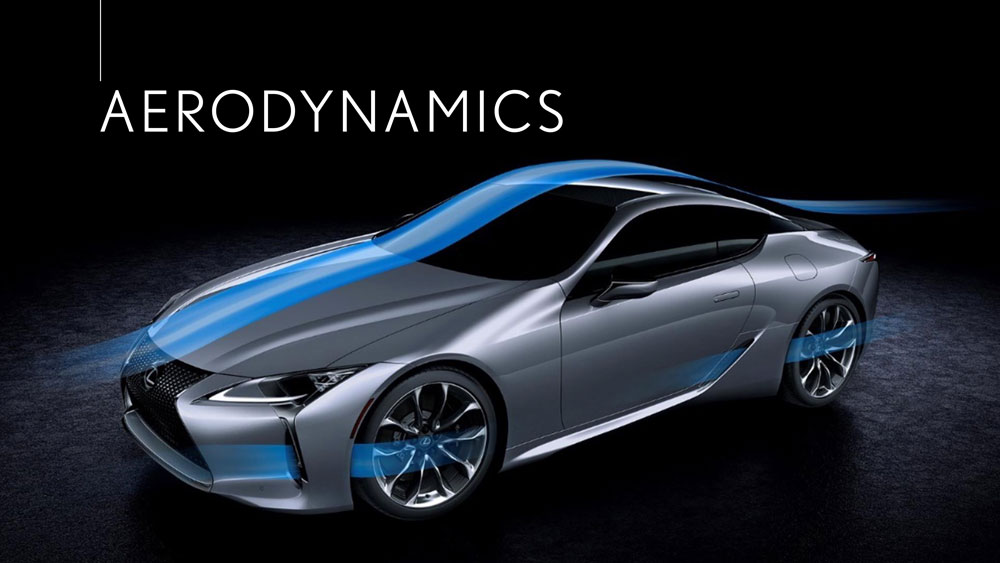
For further stability, an active rear wing is automatically raised when the LC reaches 50 mph (80km/h) to reduce lift at higher speeds:
Lexus LC 500h Powertrain
The LC 500h introduces the first Multi-Stage Hybrid system from Lexus, and its goal is to bring a new level of performance to hybrid technology:

At the heart is the 8GR-FXS 3.5-liter, 24-valve, naturally aspirated V6 with dual intelligent variable valve timing, with 295 horsepower and 257 lb.ft of torque. The LC 500h also has an electric motor to boost power and improve efficiency — it’s the first Lexus to use lithium-ion batteries rather than a nickel–metal hydride battery:
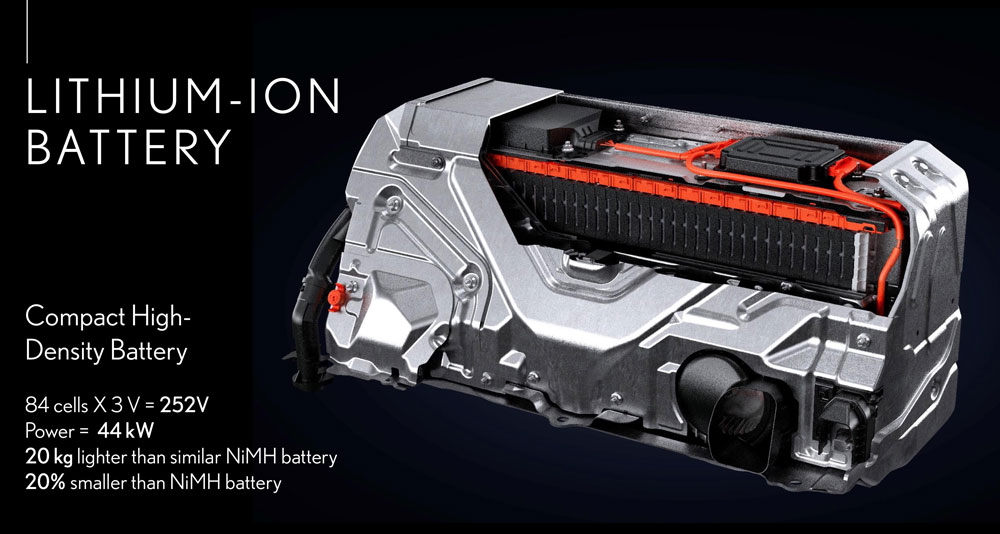
This new battery pack is 20% smaller and 44 pounds lighter than the unit used in the LS 600h, meaning less weight and more efficient use of space. It fits between the rear seats and the trunk, and has 84 battery cells producing 310.8 volts.
From here, the LC diverges from other hybrids and things get trickier to explain — here’s a video from Lexus that dives into the details of the Multi Stage Hybrid System:
If for any reason you’re unable to watch the video, here’s a convoluted explanation — the power coming from the V6 and the electric motor are amplified through a four-speed automatic transmission embedded inside a continuous variable transmission. This “dual” transmission provides stepped access to the torque generated by the electric motor, and recreates a 10-speed transmission with three virtual gears between each of the automatic transmission’s physical gears.
Lexus LC 500 Powertrain
The 2UR-GSE 5.0-liter V8 powering the Lexus LC 500 is an updated version of the engine found in the RC F & GS F. This is a naturally-aspirated 32-valve V8 with D-4S direct fuel injection, Atkinson cycle operation and optimized VVT-i — all this word soup means 471 horsepower at 7,100 rpm, a maximum torque of 398 lb.-ft. at 4,800 rpm, and a 0-60 mph time of less than 4.5 seconds:
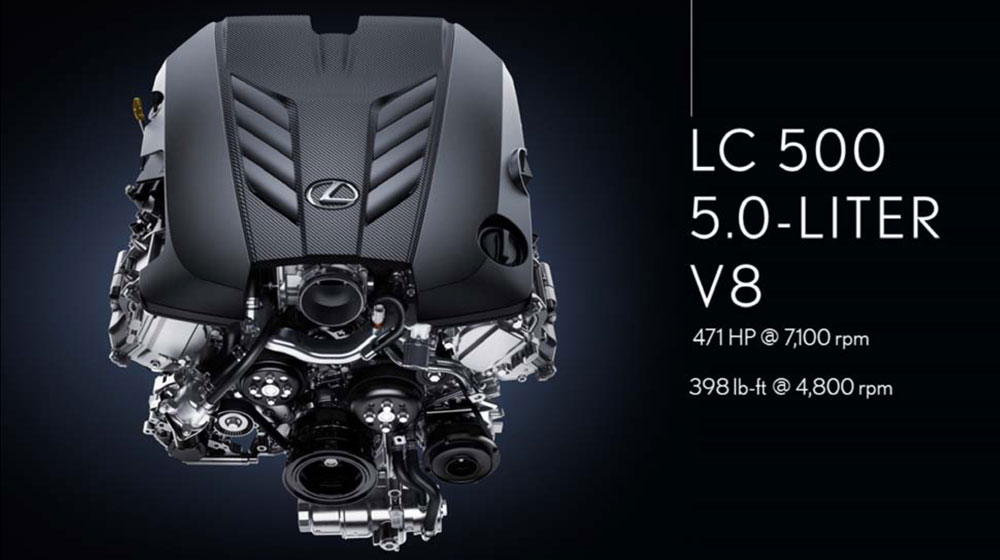
Attached to the 2UR-GSE engine is a Direct Shift 10-speed automatic transmission, marking the first time a 10-speed AT has been used in a luxury vehicle:
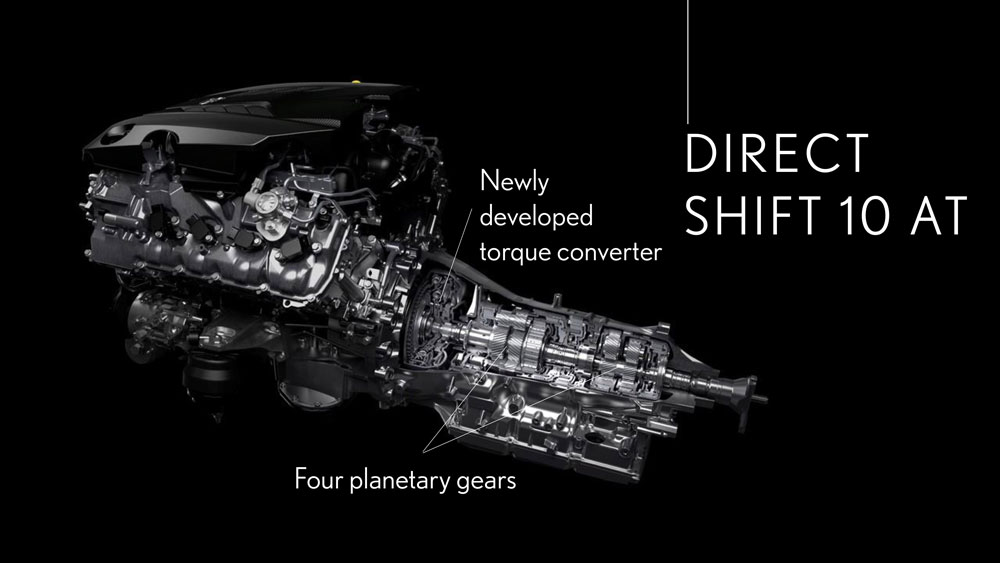
The one word Lexus used to describe the new transmission is “rhythmic” — gear ratios are tightly spaced and even, with no delay between second and third:
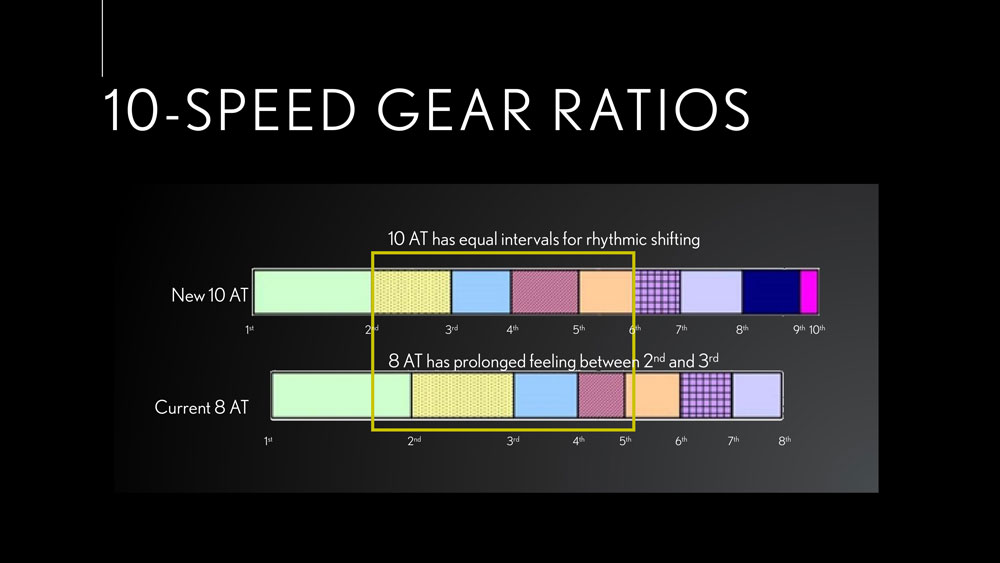
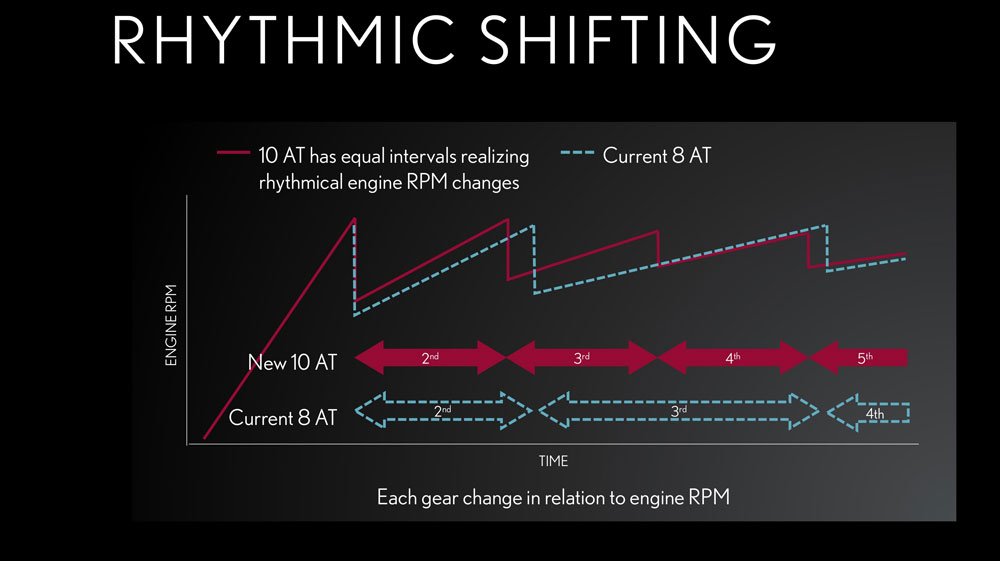
This is a learning transmission, and will select the optimum gear based on vehicle speed, acceleration, and recent driving patterns. There’s also a new torque converter with full range lock-up control, which should avoid any unnecessary revving of the engine.
Lexus Dynamic Handling with Limited Slip Differential
One of the only standalone LC options is Lexus Dynamic Handling (LDH), an active rear steering system that augments the Variable Gear Ratio Steering (VGRS) and Electric Power Steering (EPS). These systems work together to increase maneuverability — here’s a video demonstration with a Lexus GS:
LDH also comes equipped with a Torsen limited slip differential, which distributes torque between the rear wheels to assist with traction and handling.
Engine Sound
The LC 500 V8 is fitted with an intake sound generator that channels select authentic frequencies into the cabin — Lexus was very specific in outlining their four key sound objectives, here it is quoted in full:
- Pulsating feel: Actively emphasizes half-order vibrations at high RPM on the high order side;
- Spectral harmony: Realizes perfect sound intervals (8 degrees and 5 degrees) with three or more orders of vibration;
- Stereophonic sound: Produces a sense of depth and a localization of the sound image at high and low RPM;
- Formants: Produces at least two of the three senses including composure, solidness and elation at resonant frequencies — 400Hz produces a sense of composure, 800Hz produces a sense of elation, and at 800Hz there is a particular emphasis on a sense of penetrating sound at high RPM.
Exhaust System
The LC uses a clamshell muffler design that can switch exhaust gas routes — the valves remain closed at low speeds and cruising to minimize the sound, but on acceleration, the valve open to improve engine output and make some serious noise:
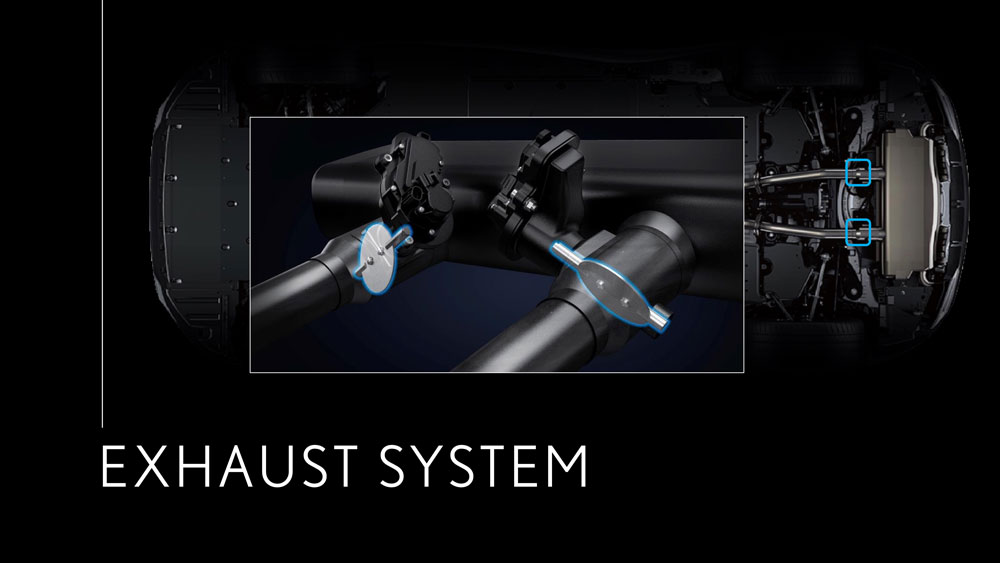
Brakes
Compared to the rest of the LC, the brakes are a rather simple affair — there are 6-piston front calipers and 4-piston rear calipers, both with ventilated discs and high-friction pads:
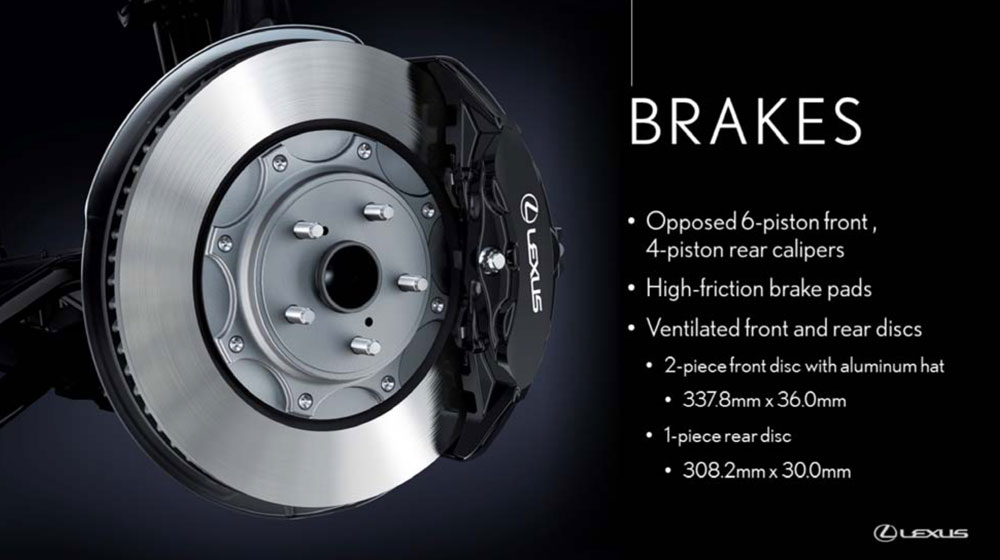
Drive Mode Select
Both the LC 500 & LC 500h are equipped with the Lexus Drive Mode Select, the system than enables the driver to customize the vehicle dynamics — here’s a graphical breakdown of the different modes:
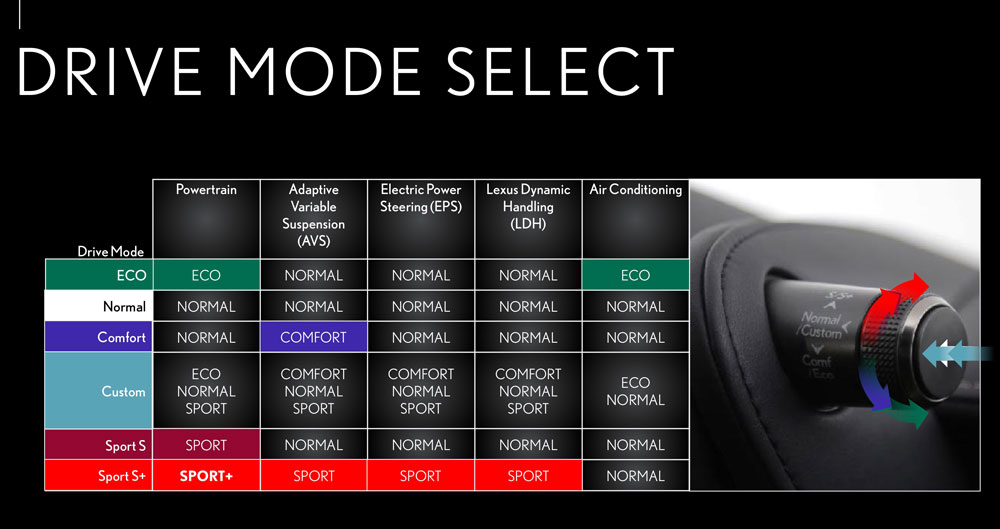
Technology
The next-generation Lexus infotainment system will debut with the LC, featuring improved voice recognition and a larger haptic Remote Touch controller:
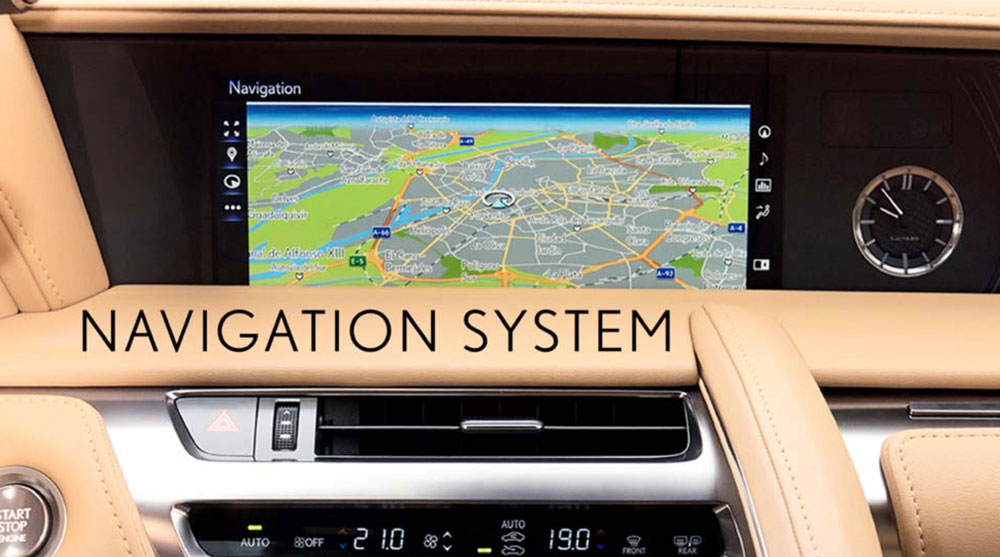
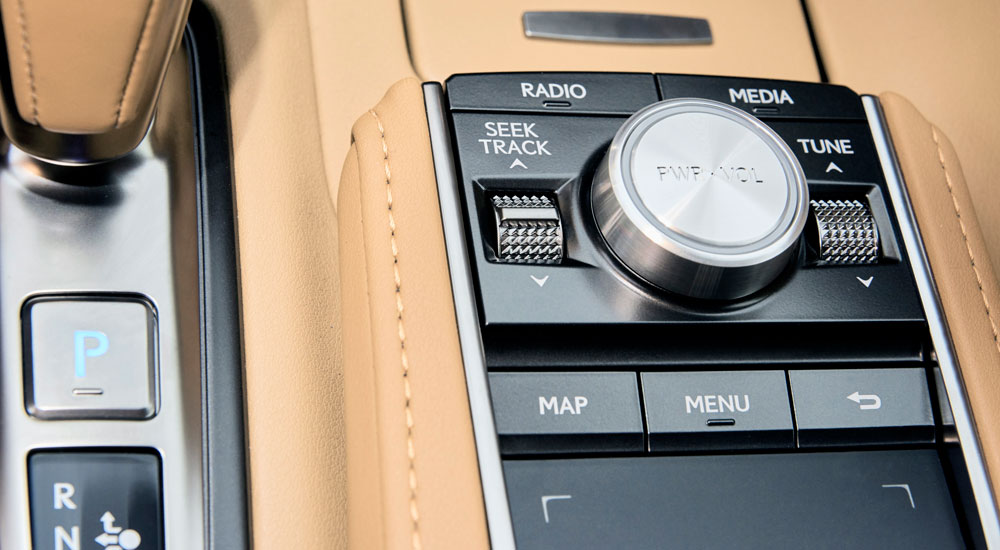
(Information on the new system was sparse — expect more details as the LC release date gets closer.)
The LC will also be the first Lexus to offer a new large color Heads-Up Display that projects onto the windshield in front of the driver — it will be available as a standalone option:
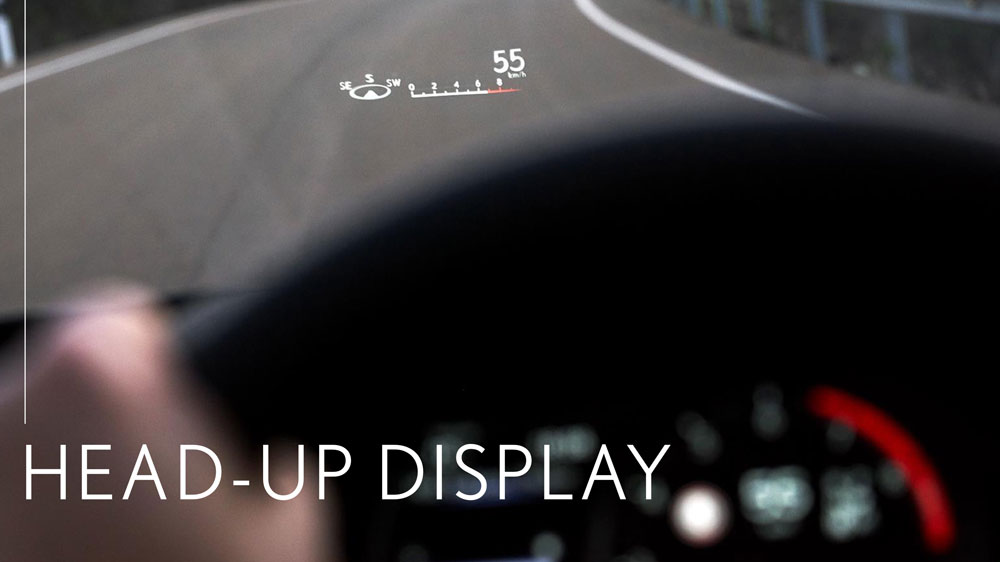
Audio
The standard audio system is a Pioneer twelve speaker surround sound system, with four double speakers in the A and C pillars, two woofers in the doors, a midrange speaker in the center console, a subwoofer in the back deck, and a 8-channel Class-D amplifier under the trunk:
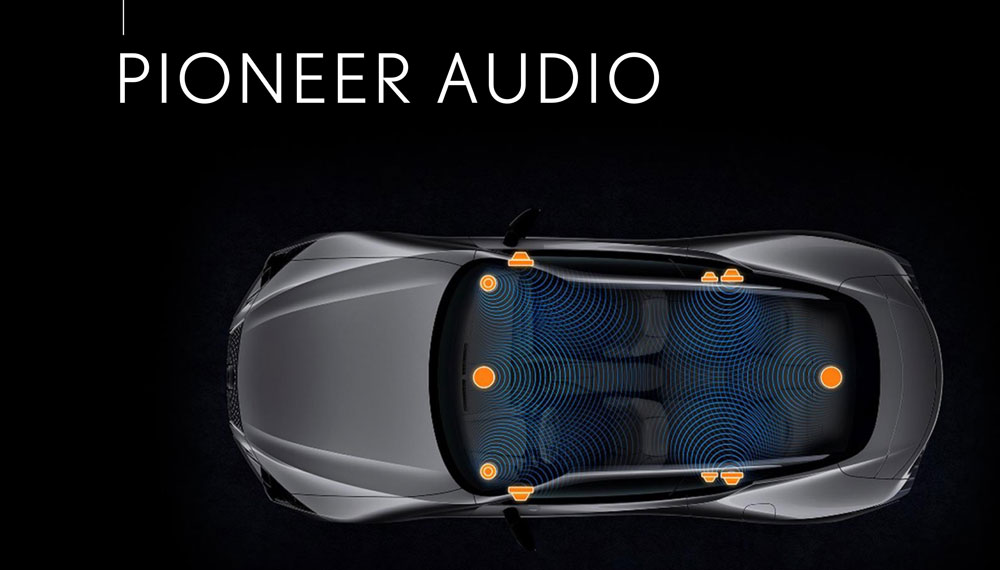
The step-up from standard is the Mark Levinson Reference Audio System with thirteen speakers and an 11-channel Class-D amplifier pushing out 915 watts:
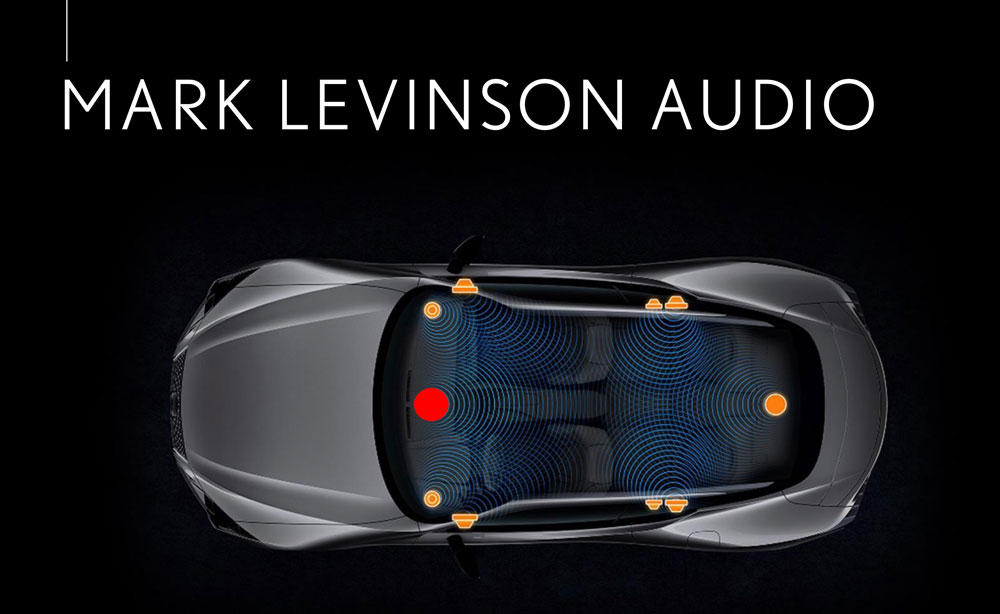
The ML system also features Clari-Fi, a music restoration technology that improves the quality of digitized music.
Exterior Colors
The LC will debut two new exterior colors to the Lexus lineup — first is Structural Blue, which was first seen with the debut of the LC 500h earlier this year:
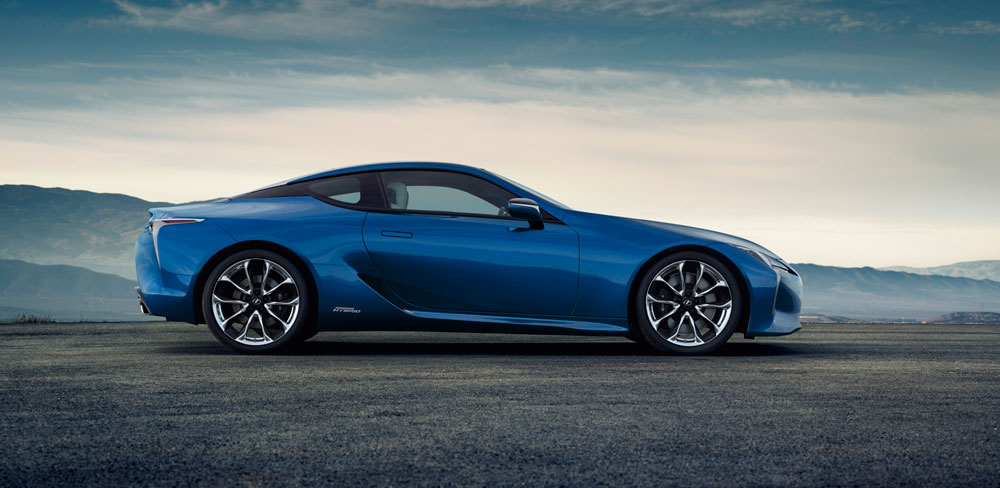
Flare Yellow is the second new color — it’s made using multiple layers of paint, including a middle coat of Ultra White:
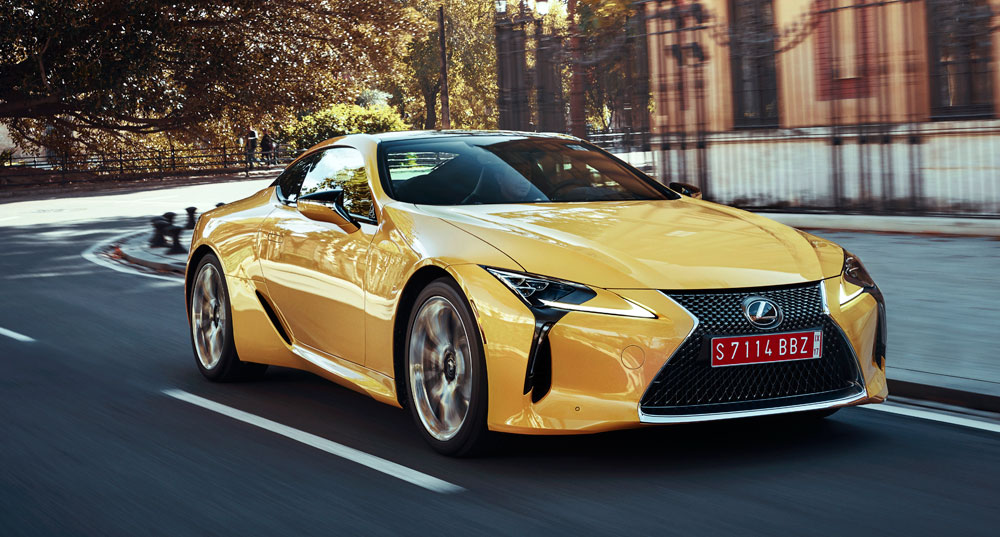
Rounding out the palette are the usual Lexus staples: Ultra White, Obsidian, Liquid Platinum, Atomic Silver, Nebula Gray Pearl, Caviar, Matador Red Mica, Infrared, Nightfall Mica, and Autumn Shimmer — here they are, shown with their European names:
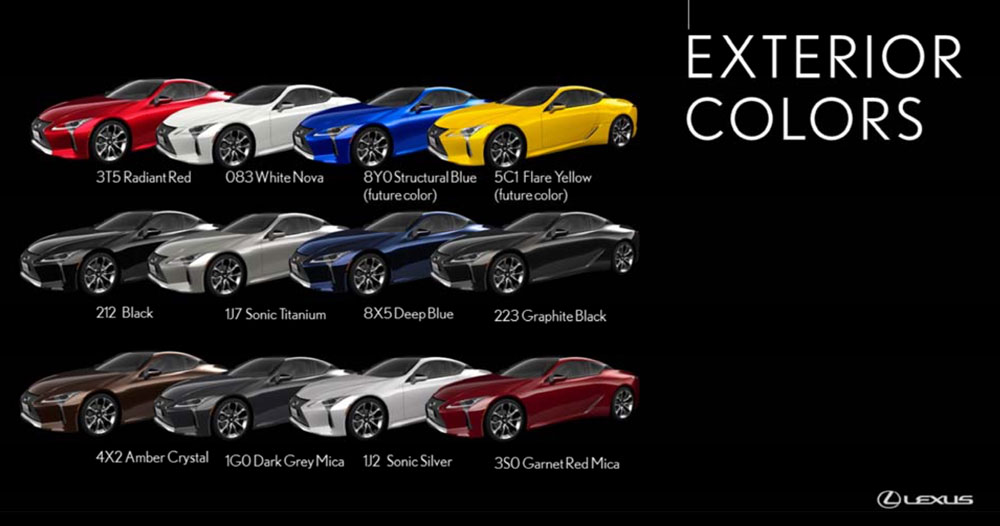
Interior Colors
For the US market, there are four interior color schemes to choose from — Mid Brown, Rioja Red, Black, and the vibrant Bespoke White:
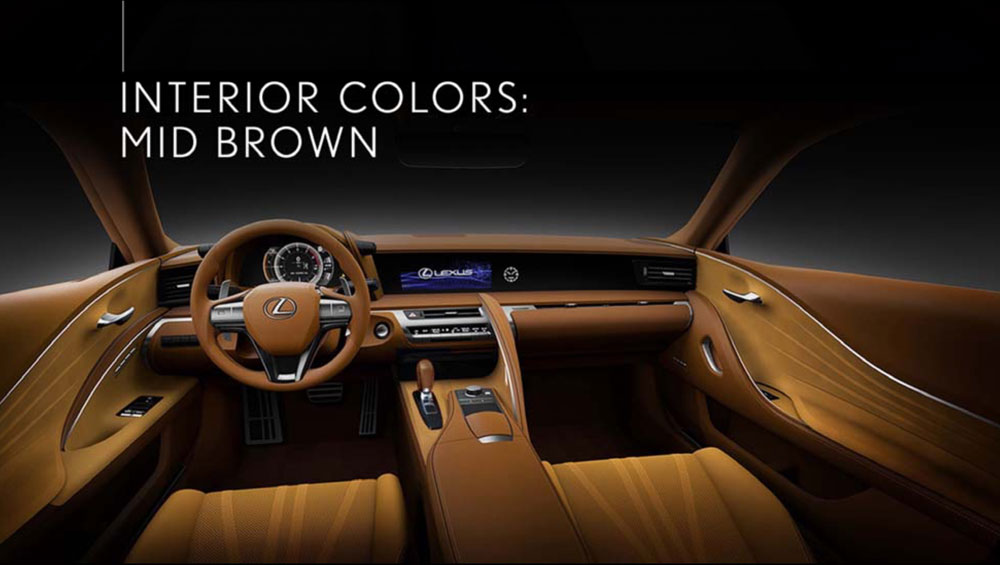

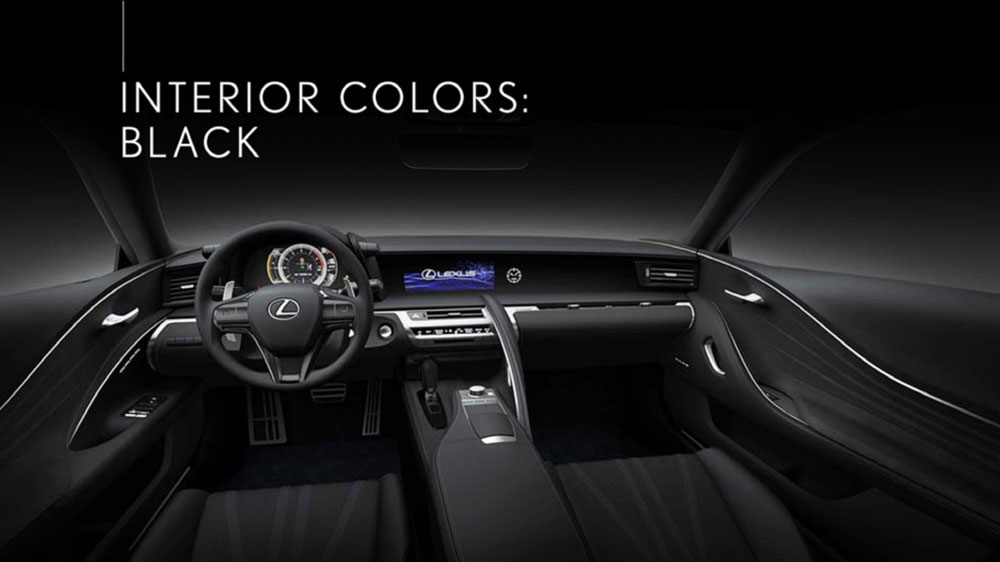

Wheels
Three different wheel designs will be offered — a 20-inch cast aluminum wheel will be standard, and will feature a hollow rim to reduce weight and absorb tire noise:

There’s also an optional 20-inch forged aluminum wheel:
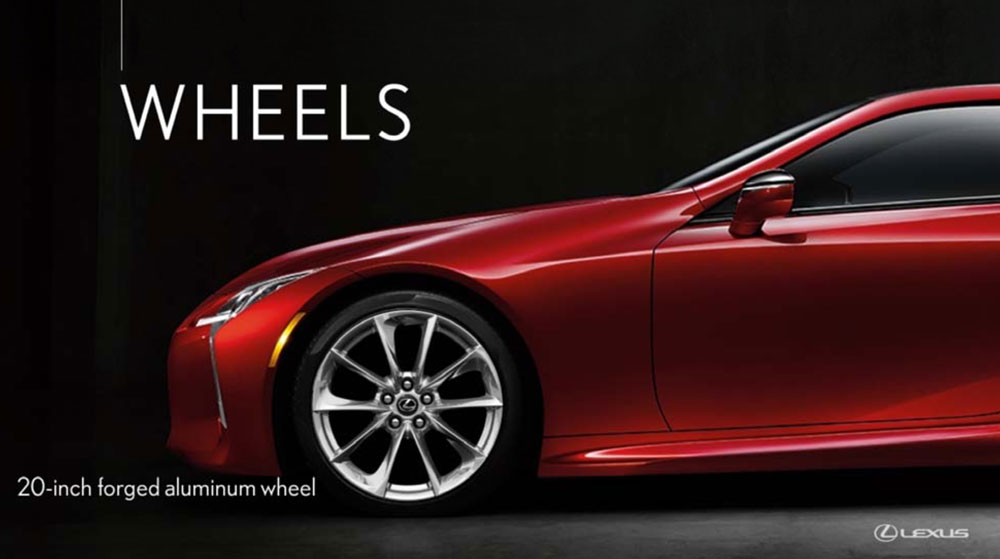
The Sport package gets an upgraded 21-inch forged aluminum wheel:
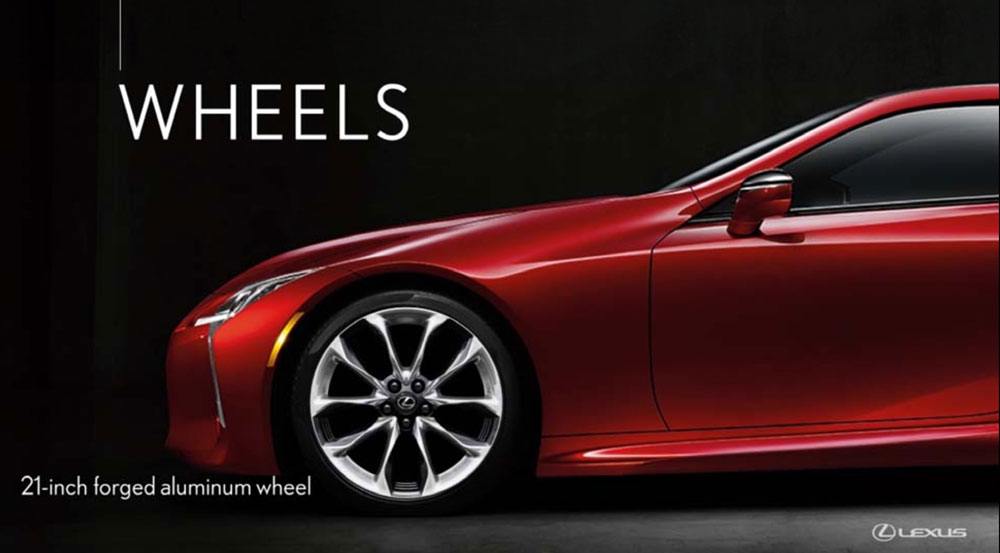
As a way to reduce the weight of a spare, the LC will comes standard with run-flat tires:
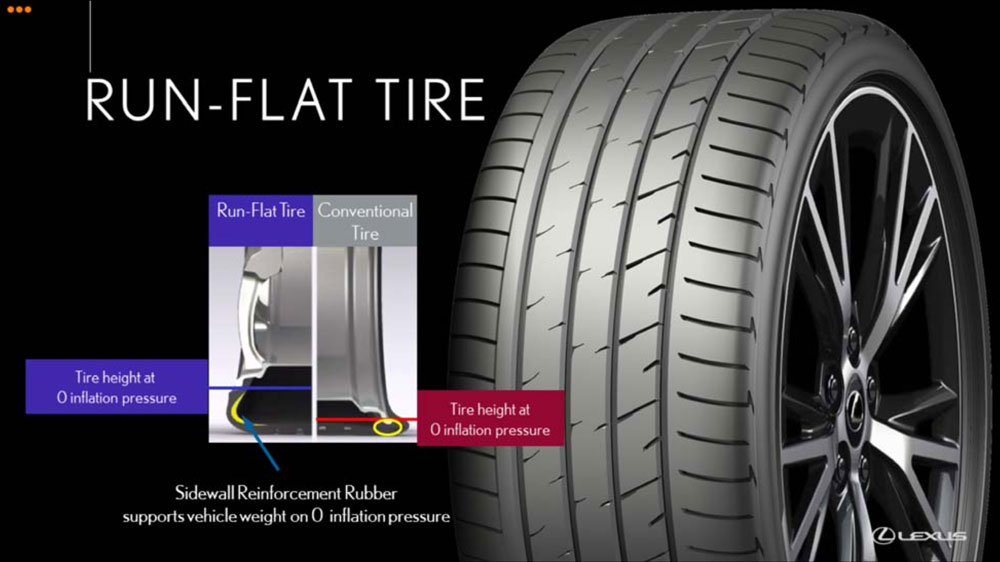
The increased stiffness of reinforced side walls has been factored into the suspension, and will allow for up to 100 miles (160 kms) at 50 mph (80km/h) should the wheel be punctured.
The standard 20-inch tires are made by Bridgestone, and measure 245/45RF20 in the front and 275/40RF20 in the back. The Sport package will have 21-inch wheels — the front tires will measure 245/40RF21 and be made by Bridgestone, while the rear tires will be manufactured by either Dunlop or Michelin and will measure 275/35RF21.
Sports Package
There is an optional Sport package for the USA — this will include an optional Carbon Fiber Reinforced Plastic (CFRP) roof, the speed-activated rear wing, and the 21-inch forged aluminum wheels.
Safety
The LC 500 & LC 500h will come standard with the Lexus Safety System +, a package of active safety features:

- Pre-Collision System with Pedestrian Detection, which uses sensors to detect potential obstructions and assist in applying brake force. The system will also automatically activate the brakes if a collision is unavoidable.
- All-Speed Dynamic Radar Cruise Control will automatically maintain a pre-set distance from the vehicle traveling in front when the cruise control is activated.
- Lane Departure Alert with Steering Assist uses a camera mounted on the windshield to track lane markings, and will notify the driver if a border line. If enabled, Steering Assist will automatically correct your steering to keep you within the lines.
- Intelligent High Beams automatically detects oncoming traffic and will switch the headlights between high and low beams.
As an additional safety measure, the LC employs a pop-up hood in the event of a front impact with a pedestrian — the hood uses a series of pistons that rapidly elevates the hood in hopes of lessening personal injury:
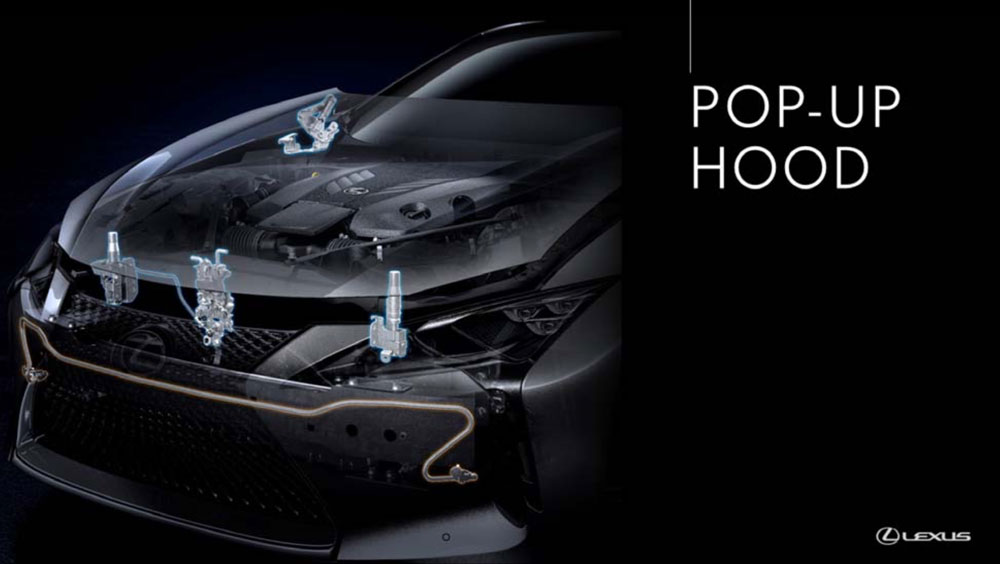
Manufacturing & Assembly
The LC will be built at the Lexus Motomachi facility, the same plant that produced the 500 LFA supercars — the factory has been reconfigured specifically for the LC, with a new production line finished in white from floor to ceiling:
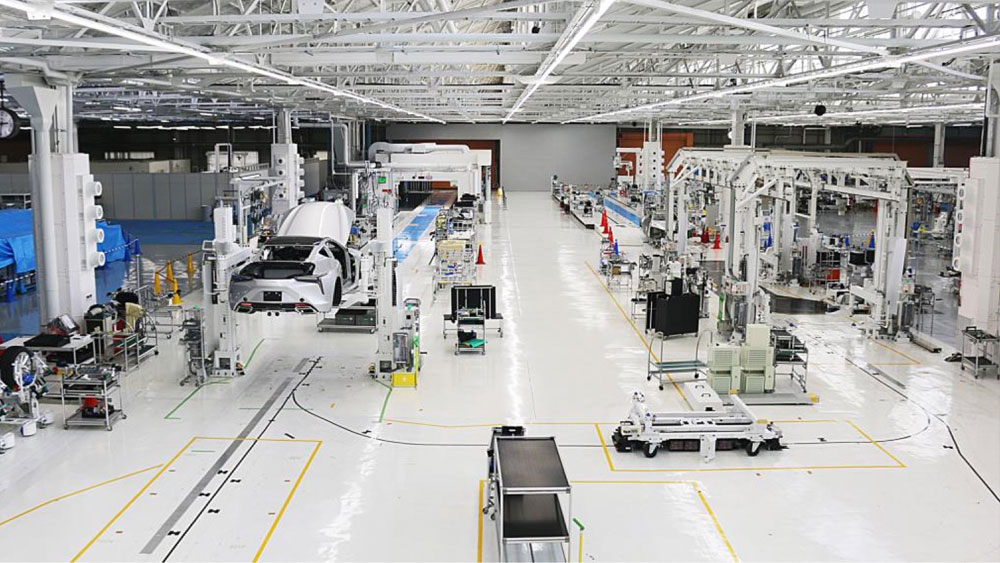
Many of the Takumi master craftsmen that built the LFA will continue their work on the LC, specifically when it comes to carbon fiber components, leatherwork, and paint. Each team member on the assembly line will spend as much as 20 minutes working on every car, and final quality checks will be performed in a silent glass-walled inspection booth — makes for a cool photo:
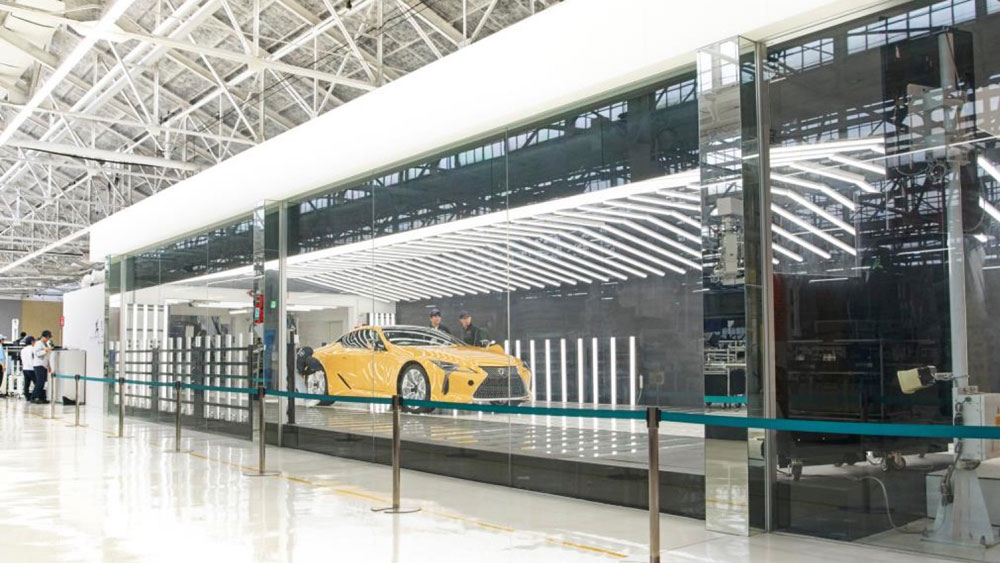
This concludes the technical overview of the Lexus LC 500 & LC 500h. Check back on Monday for Kevin’s personal impressions! Our special thanks to Lexus USA for the invitation and hospitality during our trip to Spain.

